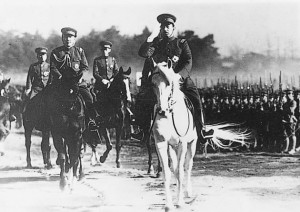Japan’s Emperor Akihito
Friday, December 21st, 2018December 21, 2018
On Sunday, December 23, Japanese Emperor Akihito celebrates his 85th birthday. In Japan, the emperor’s birthday is a national holiday. The holiday, called Tennō Tanjōbi in Japanese, is one of just two days during the year that the public may enter the grounds of the Imperial Palace in Tokyo, the Japanese capital. The other public day is January 2, when the emperor makes a formal New Year’s greeting. Akihito has been emperor of Japan since 1989, when he succeeded his father, Hirohito. Heisei was chosen as Akihito’s reign name, and he is known as the Heisei Emperor.

Akihito, who became emperor of Japan in 1989, is scheduled to step down in 2019. Credit: © Mark Reinstein, Shutterstock
Until after the end of World War II (1935-1945), the emperor was worshipped as a divine being in Japan. Today, despite his status as a mere mortal, the emperor remains a symbol of the nation. The emperor performs some ceremonial duties specified in the Constitution, but he does not possess any real governing power.

Emperor Hirohito, Akihito’s father, is seen here (on the white horse) in 1938. Hirohito renounced the throne’s claims to divinity in 1946. Credit: AP/Wide World
Akihito was born on Dec. 23, 1933, in Tokyo. Akihito spent his early years in the rigid seclusion preferred for sacred emperors. After 1945, the life of Japan’s imperial family changed. Akihito studied with an American tutor, Elizabeth Gray Vining. In 1953, he toured the West. His marriage to a commoner, Michiko Shoda, in 1959 was considered symbolic of Japan’s new democracy. The couple have two sons and one daughter. Crown Prince Naruhito, the oldest child, is heir to the throne.

The Imperial Palace is the home of the Japanese emperor. It stands in a beautiful parklike setting near the center of Tokyo. Stone walls and moats separate the palace grounds from the rest of the city. The settlement that became Tokyo was established in this area.
Credit: © Shutterstock
Akihito is due to step down at the end of April 2019, when Naruhito will succeed to the throne. Naruhito’s birthday, February 23, will have already passed, so the next Tennō Tanjōbi will not be until February 2020.




